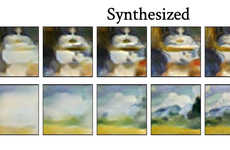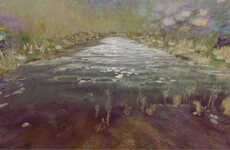
Teaching Art History Through Morphing Technology
Kyla Gutsche — June 5, 2007 — Art & Design
References: trendhunter
Whether you're lazy or just strapped for cash, this lightening--and enlightening--tour of 500 years of women in Western art is the new approach to art history. Traditional art historians may shudder at this innovative trend, but, heh, if it gets more people interested in art than that's a good thing, right?!
Implications - Technology allows for content that some have spent decades closely studying to be condensed to a mere matter of minutes. Though this is an impressive development, some may not find speed learning to be the most effective teaching method for some. Regardless, the availability of these tools will surely open doors for their further development in the future.
Implications - Technology allows for content that some have spent decades closely studying to be condensed to a mere matter of minutes. Though this is an impressive development, some may not find speed learning to be the most effective teaching method for some. Regardless, the availability of these tools will surely open doors for their further development in the future.
Trend Themes
1. Speed Learning Art History - Opportunity to develop innovative ways of teaching art history through technology.
2. Condensed Learning - Opportunity to develop short yet effective content for learners.
3. Accessible Art Education - Opportunity to make art education more accessible to a wider audience through technology.
Industry Implications
1. Education - Opportunity for educational institutions to introduce innovative approaches to teaching art history.
2. Technology - Opportunity for technology companies to develop more sophisticated tools and platforms for teaching art history.
3. Art and Culture - Opportunity for museums and cultural institutions to expand their audience and accessibility through technology.
5.4
Score
Popularity
Activity
Freshness















